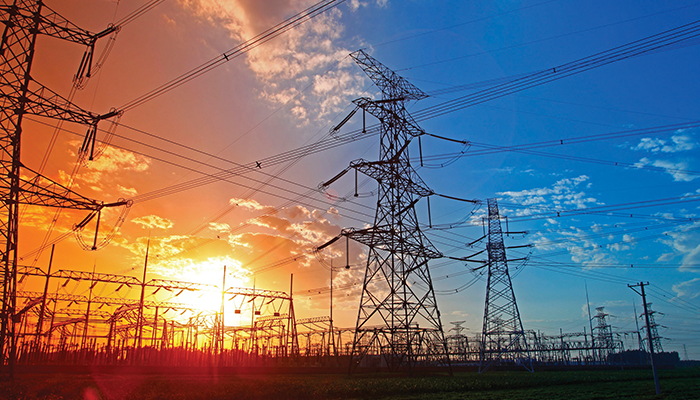All
Massachusetts Looks to Deploy Electricity Storage

Massachusetts is looking to enhance the performance of its electric grid by increasing the deployment of energy storage capacity.
The administration of Gov. Charlie Baker recently issued an in-depth report, entitled State of Charge, that outlines a plan to enhance the efficiency, affordability, resiliency and cleanliness of the electric grid by modernizing the way the Commonwealth generates and delivers electricity. The study presents policy recommendations to support the deployment of 600 MW of advanced energy storage in the Commonwealth by 2025, which the report says would provide $800 million in system benefits to Massachusetts ratepayers.
Increasing the amount of storage capacity on the grid has the potential to transform electricity generation and consumption for the benefit of Massachusetts ratepayers, the report states. “As compared to other commodities, the electricity market currently has the least amount of storage in its supply chain. Other commodities, including food, water, gasoline, oil and natural gas, have an average storage capacity of 10 percent of the daily consumption. The electricity market currently has a storage capacity of only 1 percent of daily electricity consumption in Massachusetts,” the report states.
In addition to having a small storage capacity, electricity is also the fastest moving supply chain, traveling at 1,800 miles per second. “Without storage, electricity needs to be produced, delivered, and consumed nearly instantaneously for the grid to maintain balance. This requires grid infrastructure—including generation, transmission and distribution systems—to be sized to manage the highest peak usage of the year, despite consumer electricity demand varying significantly both throughout the day and at different seasons of the year,” the report says.
The need to size all grid infrastructure to the highest peak results in system inefficiencies, underutilization of assets, and high cost to ratepayers. “These high costs can be seen in the highly variable hourly electricity prices,” the report states. “Over the last three years from 2013 to 2015 on average, the top 1 percent most expensive hours accounted for 8 percent ($680 million) of Massachusetts ratepayers’ annual spend on electricity. The top 10 percent of hours during these years, on average, accounted for 40 percent of annual electricity spend, over $3 billion.”
Energy storage is the only technology that can use energy generated during low-cost, off-peak periods to serve load during expensive peak periods, thereby improving the overall utilization and economics of the electric grid. “Until recently, the ability to store electricity across the electric grid was limited, but recent advances in new energy storage technologies, such as grid-scale batteries, are making viable the wide-scale deployment of electricity storage,” the report says.
Advanced storage technologies can also provide the flexibility needed to reliably manage and utilize renewable resources’ variable output. Today, the electric system operates on a “just-in-time” basis, with decisions about power plant dispatch that are based on real-time demand and the availability of transmission to deliver it. Generation and load must always be perfectly in balance to ensure high power quality and reliability. Maintaining this perfect balance becomes more challenging as intermittent renewable generation, such as wind and solar, grows. Additionally, storage resources can be an important tool for better managing electric outages caused by severe weather, thus increasing grid resiliency.
Deploying Electricity Storage
As part of the state’s $10 million Energy Storage Initiative (ESI), the Department of Energy Resources (DOER) and the Massachusetts Clean Energy Center (MassCEC) partnered on the State of Charge. They analyzed energy storage benefits and opportunities and examined potential policies and programs that could support both energy storage deployment and growth of the storage industry in Massachusetts. More than 300 stakeholders participated, including representatives from the utilities, municipalities, competitive suppliers, storage project developers, renewable generation developers, storage technology companies, and the regional grid operator, ISO New England (ISO-NE).
“The message was clear,” the report states “Energy storage is recognized as a game changer in the electric sector.” While recognizing the potential of energy storage, however, stakeholders identified numerous challenges and barriers that are preventing widespread deployment. These include uncertainty regarding regulatory treatment, barriers in wholesale market rules, limitations in the ability for project developers to monetize the value of their energy storage project, and the lack of specific policies and programs to encourage the use of innovative storage technologies.
The term “energy storage” applies to many different technologies, including: batteries, flywheels, thermal storage, and pumped hydroelectric storage. All technologies can store energy during periods when the cost is low and then make the energy available during periods when the costs are higher.
Pumped hydro storage is often referred to as a “conventional” storage technology and involves pumping water into a large reservoir at a high elevation—usually located on the top of a mountain or hill—and then using hydroelectric turbines to convert the energy of flowing water to electricity. Newer and more flexible forms of energy storage such as batteries, flywheels, thermal, and new compressed air energy technologies are often referred to as “advanced energy storage.” Advanced energy storage resources are capable of dispatching electricity within seconds. They can provide various storage durations – from 15 minutes to over 10 hours – and range in scale from small systems used in homes for backup power to utility-scale systems that interconnect to the bulk power grid.
Focus on Advanced Technologies
To date, energy storage in Massachusetts has primarily been limited to pumped hydro storage, which likely will not be expanded. Therefore, the State of Charge study focuses on new advanced energy storage technologies, some of which are commercially viable and in use around the world. The U.S. Department of Energy (DOE) reports that more than 500 MW of advanced energy storage is already operating in the U.S. Annual deployments of advanced energy storage are expected to exceed 1 GW per year by 2019 and approach 2 GW per year by 2020. Massachusetts ranks 23rd in the country in installing advanced energy storage.
Prices for advanced storage technologies have decreased significantly in
recent years. According to IHS, a leading business data provider, average lithium-ion battery prices decreased in cost over 50 percent between 2012 and 2015, and are expected to decrease over 50 percent again before 2019.
Advanced storage projects typically require a much smaller footprint and shorter construction timeline than conventional generation, the report states. The modular design of storage resources means that the projects can be sized to any level. Increments of capacity can easily be added to increase the size of the project.
Peak Demand Is Growing
Massachusetts has already implemented energy efficiency programs that have reduced average energy consumption. However, according to ISO-NE’s State of the Grid 2016 report, the peak demand continues to grow in the region at a rate of 1.5 percent per year. In order to provide enough energy during peak periods, new natural gas “peaker” plants are being built even though they are needed only for a small amount of hours per year. According to the U.S. Energy Information Administration (EIA) peaker plants only operate 2 percent to 7 percent of the hours in a year. Instead of generating electricity with natural gas “peaker” plants during times of high electric and fuel prices, storage can be used to “peak shift” by using lower cost energy stored during off-peak periods to meet this demand.
To meet the state’s goals for reducing greenhouse gas (GHG) emissions, the use of intermittent renewable generation, such as wind and solar, is growing in the New England region. To maintain reliability with a large penetration of renewable resources, new resources are needed that can quickly follow the variable and unpredictable changes in renewable resource output. According to ISO-NE’s State of the Grid 2016 report, fast and flexible resources will be needed to balance intermittent resources’ variable output. Across the country, advanced storage technologies that can change output very quickly (in less than 1 second) in response to a change in output from a renewable resource have been seen as an ideal technology to provide fast, accurate balancing services to the grid.
The amount of installed distributed generation, particularly solar photovoltaic (PV) resources, has skyrocketed in the Commonwealth. There are over 40,000 distributed solar PV projects operating today, with 400 newly installed projects per week. As more solar PV resources are connected to the distribution system, utilities are challenged to manage two-way power flows at the substations. Distributed storage located at substations can help manage flows more effectively and alleviate reliability issues caused by reverse power flows. Reverse power flow is an excess of power flowing from the solar generator into the grid, which may damage the grid’s protective systems. Eliminating the reverse power flow concerns will provide reliability benefits and lower the cost of integrating distributed solar resources.
Encouraging Investment
Generally, in order for a private entity to make an investment in storage, the revenue from the investment has to outweigh the capital investment cost. From a ratepayer perspective, the system benefits alone justify an investment in storage. However, the existing revenue mechanisms that would encourage investment from a private storage developer are often insufficient. Private investors will simply not invest in building storage projects in Massachusetts without a means to be monetarily compensated for the value the storage resource provides to the system, even though doing so would result in cost benefits to ratepayers that substantially outweigh the cost of investment, the report states.
The biggest challenge to achieving more storage deployment in Massachusetts is the lack of clear market mechanisms to transfer some portion of the system benefits (e.g. cost savings to ratepayers) created to the storage project developer. This limit on existing energy storage opportunities prompts a fresh look into how to account for the complete energy storage benefits by the wholesale and retail electricity markets, as well as by regulators and policy makers.
In June 2014, the Massachusetts Department of Public Utilities (DPU) issued Order 12-76-B, requiring each electric distribution company (EDC) to develop Grid Modernization Plans (GMPs) to meet four objectives: (1) reduce the effect of outages; (2) optimize demand, which includes reducing system and customer costs; (3) integrate distributed resources; and (4) improve workforce and asset management. Energy storage would successfully address several of these objectives, particularly optimizing demand, integrating distributed resources, and mitigating outages. “Energy Storage Technologies” is included as one of the categories of grid modernization assets that are eligible for rate recovery if justified with a business case that includes all quantifiable and unquantifiable benefits and costs. Current utilities’ GMPs, filed with the DPU, include small storage demonstration projects.
The Massachusetts Green Communities Act requires that investor-owned utilities and approved municipal aggregators seek “…all available energy efficiency and demand reduction resources that are cost effective or less expensive than supply.” In 2016-2018 the Statewide Three Year Energy Efficiency Plans have a new focus on Peak Demand Savings, including demonstrations and assessment of current incentives and cost-effectiveness framework. Energy storage, used to shift and manage load as part of peak demand reduction programs, can be deployed through this existing process but may require changes in the current DPU Guidelines’ benefit-cost test methodology to accommodate storage in these demand reduction programs.
In order to jump-start the market, the DOER and MassCEC plan to issue an RFP for storage project demonstrations drawing on the $10 million in ESI funding. Given the large amount of interest from study stakeholders and the study results showing substantial benefits to ratepayers from advanced storage, increasing demonstration project funding from $10 million to $20 million is recommended. This additional amount can be funded through DOER’s Alternative Compliance Payment funds or MassCEC trust funds.
Massachusetts can also create a “Rebates for Storage” program (known as “MOR-Storage”) to incentivize customer-sited storage projects. “Rebate programs have been successful in rapidly accelerating new technology adoption,” the report states. “This program would be modeled after DOER’s successful MOR-EV Rebate program that provides funding to Massachusetts residents who purchase electric vehicles.” The goal of the MOR-Storage program is to encourage Massachusetts commercial and industrial businesses to invest in storage that will 1) assist the business in lowering their electricity bills, 2) better utilize any on-site generation, and 3) provide benefits to the grid by reducing peak demand. Funding would be from DOER ACP funds.
Policy and Program Recommendations
The following recommendations capture the opportunities for strengthening the storage industry through state policies and programs.
Increase investment in storage companies. Promote the growth of an energy storage cluster in Massachusetts to expand jobs and maintain leadership in storage and expand the MassCEC Investment Programs to support energy storage companies in Massachusetts.
Develop the workforce. Expand MassCEC programs to develop the trained workforce required to support the large-scale deployment of energy storage and the growth of the energy storage industry in the Commonwealth.
Support new technology development. Utilize the energy storage expertise in Massachusetts’ world class universities to support energy storage startups in Massachusetts and invest in research and development and testing facilities to anchor an energy storage cluster in Massachusetts.
Related Posts
 Spotlight Sessions Illuminate Opportunities and Challenges
Spotlight Sessions Illuminate Opportunities and Challenges
Posted on September 19, 2025
 NEFI Testifies on RFS Changes Affecting the Heating Oil Industry
NEFI Testifies on RFS Changes Affecting the Heating Oil Industry
Posted on August 18, 2025
 From Retailer to Representative: Chris Keyser’s Road to the Vermont State House
From Retailer to Representative: Chris Keyser’s Road to the Vermont State House
Posted on June 16, 2025
 Northeast Working Group for Industry Principles Gets to Work
Northeast Working Group for Industry Principles Gets to Work
Posted on May 8, 2025
Enter your email to receive important news and article updates.
